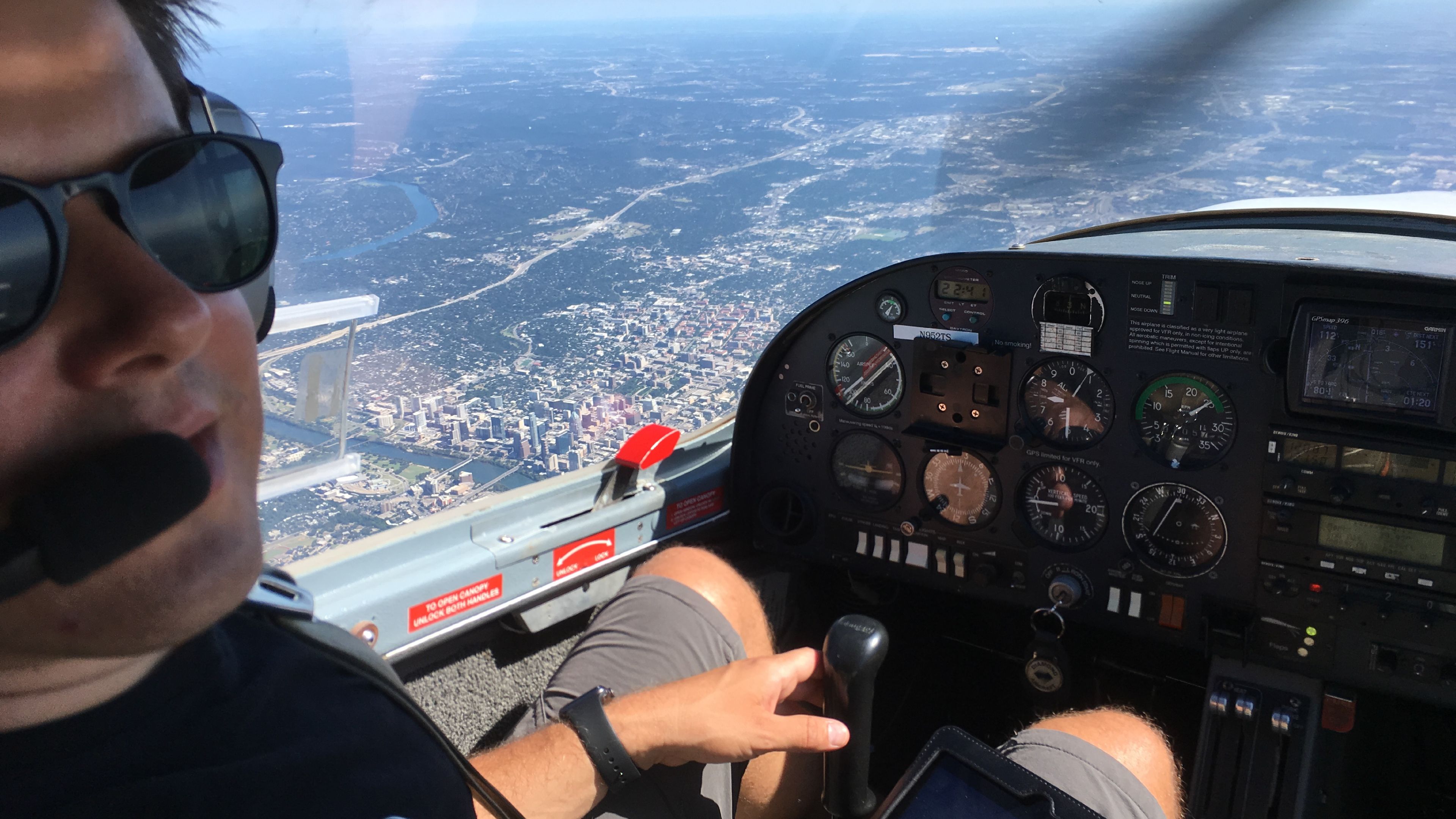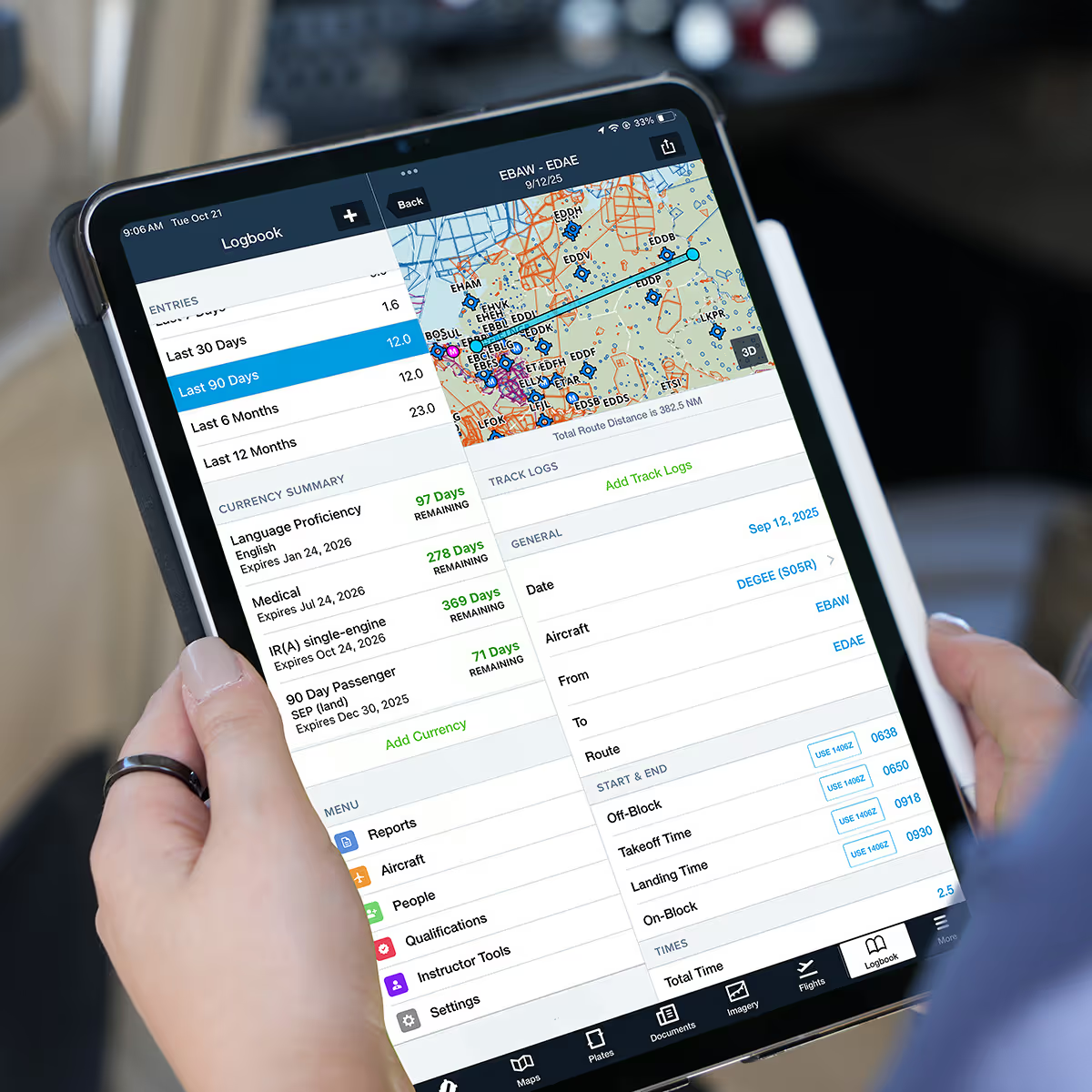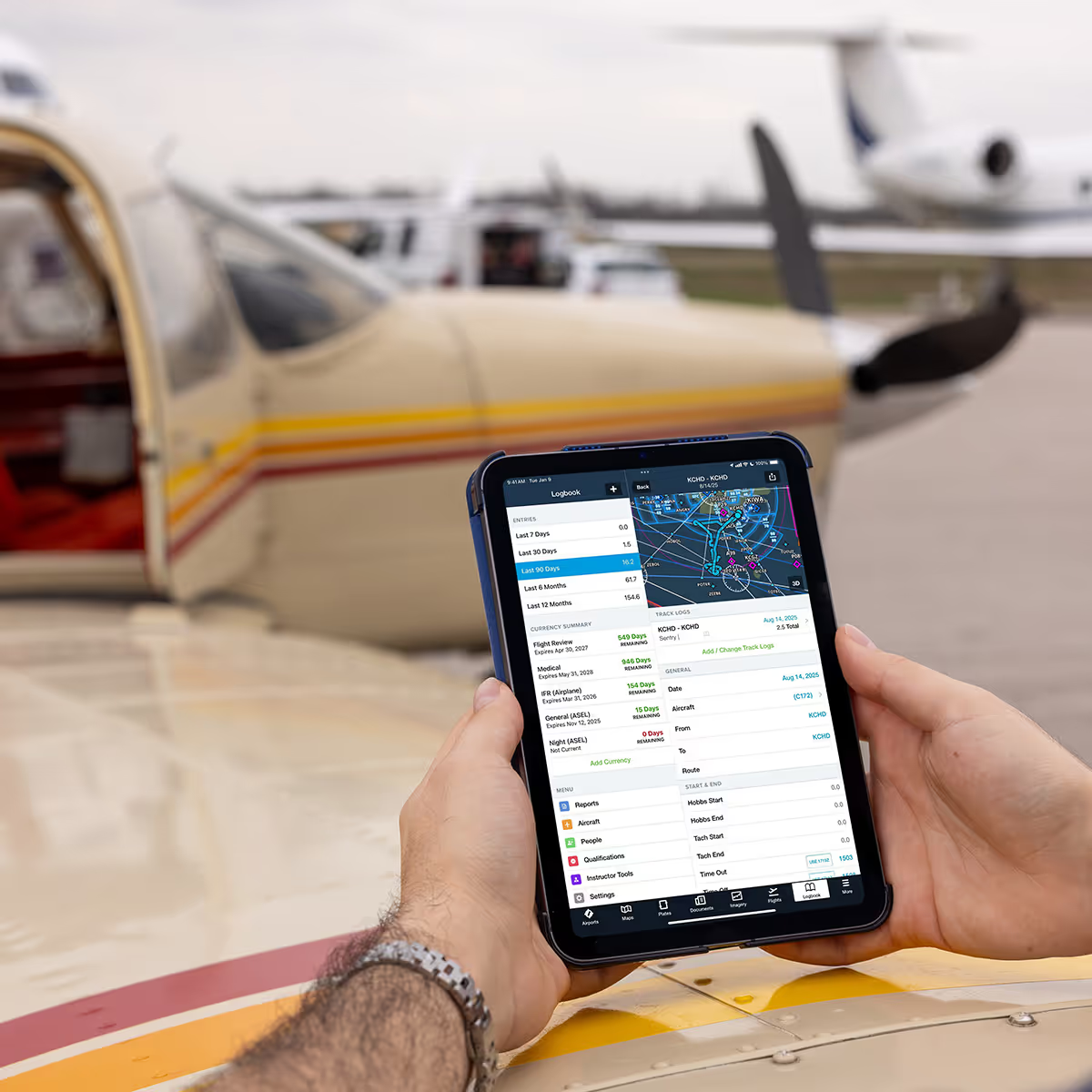I remember sitting in the crew lounge in the middle of the night between cargo flights, meticulously updating paper approach charts. My most-used approaches lived in a smaller spiral-bound binder. I’d pull out the expired charts, slip in the new ones, and cross off my progress on the change index page, hoping I hadn’t missed any critical changes.
When flying approaches, I’d carefully write down the minimum altitude I planned to use, double and triple checking that I picked the right one. Back then, I never imagined that decades later I'd help reimagine how pilots interact with instrument approach information altogether.
From night cargo to software development
After earning my commercial certificate in high school and studying aeronautical science and human factors at Embry-Riddle, I spent four years flying professionally. Those nights flying cargo taught me the real-world challenges of instrument flying: fumbling with paper charts in turbulent IMC, trying to find key details buried in cluttered diagrams, and wishing there was a better way.
Those experiences led me to spend a decade refining precomposed charts for a major airline supplier. But even as I helped improve traditional charts, I kept dreaming about what a software-first approach to instrument procedures could be. When I joined ForeFlight as a product designer, there was no guarantee I'd get to work on that vision, but I knew if it could happen anywhere, it was here.
A new way to brief and fly
I'm thrilled to finally bring that vision to life with Dynamic Procedures, ForeFlight's groundbreaking new take on displaying instrument approach information, designed from the ground up with a data-centric approach, not just reformatted paper charts. We rethought the entire experience from first principles, building on earlier ForeFlight features like Procedure Advisor and Augmented Procedures to take instrument flying to the next level.
.jpg)
At the heart of Dynamic Procedures is a scrollable sidebar that organizes approach information in the order pilots actually brief and fly it. You choose your runway, transition, and minimums, and Dynamic Procedures filters the rest, showing only what’s relevant to your selections. No more decoding walls of text or mentally sifting through details that don’t apply to your flight like I regularly did all those years ago.
On the sidebar, you’ll see only the frequencies, notes, fixes, minimums, and altitude restrictions that matter for your setup—clear, uncluttered, and ready when you need them. This focused view is easier to brief and dramatically reduces mental workload in high-stakes phases of flight.
Visualizing the approach
One of my favorite parts of Dynamic Procedures, and one directly inspired by my background in human factors research, is the 3D runway representation, which shows the runway layout, approach lighting systems, and surrounding terrain from a default three-degree glideslope perspective. The 3D view even accounts for offset approaches to depict the exact angle of the runway to your final approach course—how cool is that?
Our goal in integrating this 3D view is to help pilots build a clear mental picture of what they'll see when breaking out of the clouds, one of the most critical moments in any approach. And it’s not only a powerful tool for situational awareness in flight—it’s also a great way to brief an approach, whether you’re flying IFR or VFR.
The route to Dynamic Procedures
Over the years at ForeFlight, I developed and shared new ideas at every company “hackathon”—multi-day, high-intensity design and development events that foster new innovations and have directly led to many of our most popular features—slowly pushing my vision forward. We've released components of this feature incrementally over the past several years, but this release is our biggest leap yet.
Working alongside an incredibly talented team of passionate developers, designers, and pilots has made this journey remarkable. Together, we've built something I'm genuinely proud of: a tool that addresses the real-world challenges I faced on those night cargo flights and throughout my flying career.
While we haven't fully replaced traditional charts (yet), Dynamic Procedures lays the groundwork to keep evolving with your feedback. For now, it’s an optional supplement, but we believe it sets a new standard for what modern instrument briefing and flying can be.
A foundation for the future of IFR flying
Dynamic Procedures isn't just about digitizing paper, it's about rethinking how pilots fly in an age where software can adapt to us, not the other way around. It’s about cutting through complexity, eliminating unnecessary mental overhead, and delivering the right information exactly when you need it.
As we refine and expand Dynamic Procedures with feedback from pilots like you, I'm excited to see how it shapes the future of instrument flying.
For anyone who's ever wished for a better way to brief and fly approaches, Dynamic Procedures is our answer. It's the culmination of decades of flying experience, deep software expertise, and a shared understanding of what pilots really need in the cockpit.
And this is just the beginning.






